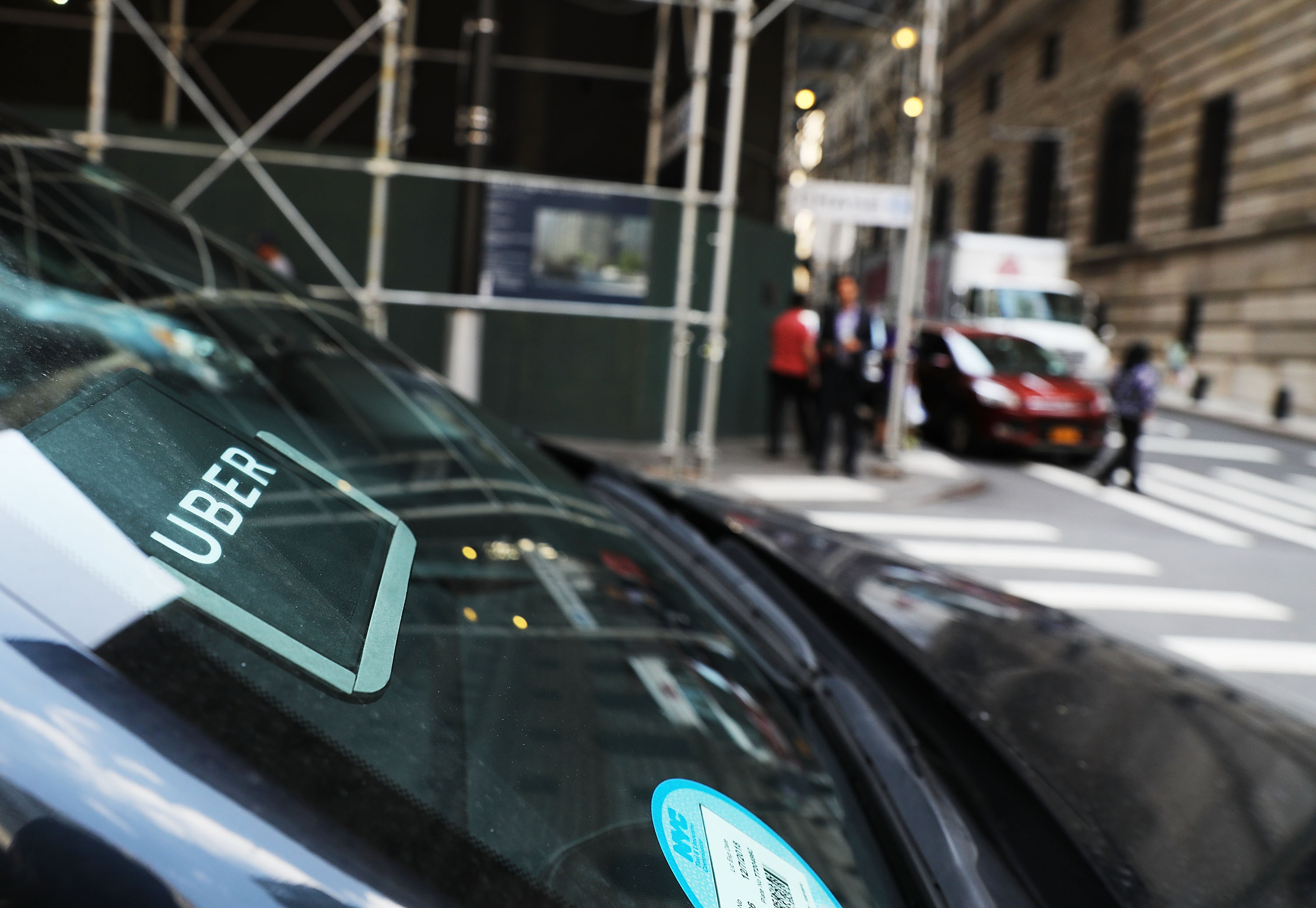In this June 14, 2017 picture, an Uber car waits for a client in Manhattan a day after it was announced that Uber co-founder Travis Kalanick will take a leave of absence as chief executive on in New York City. (AFP Photo/Spencer Platt)
By any measure, the April 2016 decision by Uber Technologies Inc. to sell its China operations to rival Didi Chuxing was a defeat. The brief but spectacular battle between the two ride-hailing behemoths had cost Uber at least $2 billion and earned it little more than the enmity of the Chinese government. The only silver lining seemed to be that Uber, free of an expensive price war, could focus its resources on other markets, including rapidly growing Southeast Asia.
That's now going to be a lot harder. Earlier this week, GrabTaxi Holdings Pte. Ltd., Southeast Asia's dominant ride-hailing company, announced it had raised $2 billion (with another $500 million on the way) to help it lock up the region. The company was already well ahead of Uber locally, thanks to a deft business plan that focused on meeting the needs of the Southeast Asian consumer, especially in payments. The fresh funds should widen that lead -- and call into question whether Uber's one-app-fits-all approach to the global ride-hailing business can work.
On paper, at least, the 10 very different countries comprising Southeast Asia seems exactly like the kind of market in which a well-capitalized global technology company like Uber should prosper. The region is now the world's fourth-largest internet market, with just over half of its 640 million citizens online. Those ranks are growing rapidly, swelled by young, middle-class consumers eager to spend.
According to a study conducted by Google and Temasek, Singapore's sovereign wealth fund, the Southeast Asian ride-hailing market is expected to be worth $13.1 billion in 2025, up from $2.5 billion in 2015. Even better, every major Southeast Asian country is expected to have a $1 billion market of its own by then, with ride-hailing making up 15 percent of total travel expenditures in the region.
Uber started offering services in Singapore in early 2013, and expanded to Malaysia later that year. For users already accustomed to the service, the experience was seamless. But for locals, especially in Malaysia, it suffered from three problems. First, it was noticeably more expensive than traditional taxi alternatives. And second, payment could be made via credit card only, despite the fact that consumers strongly preferred using cash. Finally, Uber -- like other car services in Malaysia -- suffered from perceptions that it was unsafe, especially for female riders.
Having grown up in Malaysia, Grab's co-founders launched the company in 2012 in large part to solve the security problem. Among other safety-related features, the Grab app allows users to share their journey in real-time with others. The app also includes an emergency button that connects passengers with the nearest police department and, in the interest of protecting female drivers and passengers, the company recently introduced in-car CCTV cameras.
The company accepts cash or credit cards. That appeals to drivers as well as passengers, helping to expand the company's fleet. Recognizing that many of Southeast Asia's drivers are older and suspicious of technology, and that some can't afford a smartphone, the company has made active efforts to bridge the connectivity gap: The founders themselves have tutored drivers one-on-one at local coffee shops, while the company subsidizes the purchase of smartphones for poorer drivers.
Compared to Grab, Uber feels like it's pushing a business model and an app designed in and for wealthier markets. There's no public data available on Southeast Asia's ride-hailing market, but Grab claims it enjoys a 95 percent market share in third-party taxi hailing, and a 71 percent share in private hailing. Indeed, within Southeast Asia, and especially Malaysia and Singapore, it's largely taken for granted that Grab has more cars available (something to which I can personally attest).
Grab isn't taking that commanding lead for granted. To further cement its advantage, it's moving into electronic payments. Last year it bought an Indonesian company whose technology allows mobile phone users to pay cash for online credit; its latest round of funding is earmarked to expand GrabPay, an electronic payment system for which customers also buy credits. Grab has been upfront that it envisions transforming itself via GrabPay into a consumer company that offers financial services and shopping, as well as transportation.
It bodes well that at least one other local ride-hailing firm is attempting the same transformation, hoping to fuel its diversification through e-payments. For Uber, however, this may be the end of the road in Southeast Asia. With little more to offer than a ride, it's in jeopardy of losing out to smaller companies offering an on-ramp to the digital economy. – Bloomberg
